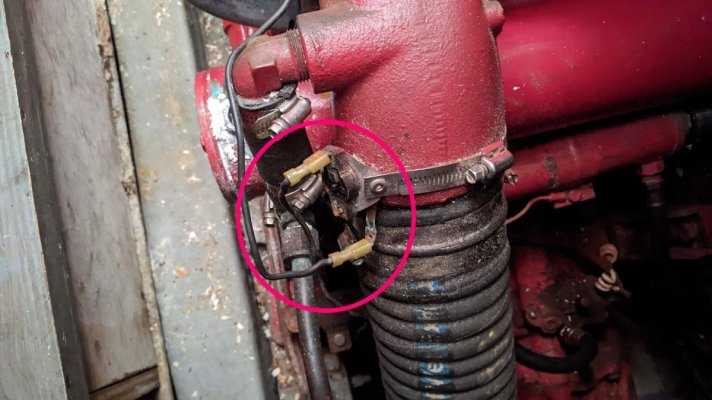I noticed a wire out of place yesterday - from something on the water/exhaust exit elbow. See attached image. The loose end is attached to a bolt in the motor in another place.
What is this doohicky held on with a modified hose clamp the wire has pulled out of?
Yeah, it's not very clean down here. PO never paid much attention to this part of the boat.
What is this doohicky held on with a modified hose clamp the wire has pulled out of?
Yeah, it's not very clean down here. PO never paid much attention to this part of the boat.

